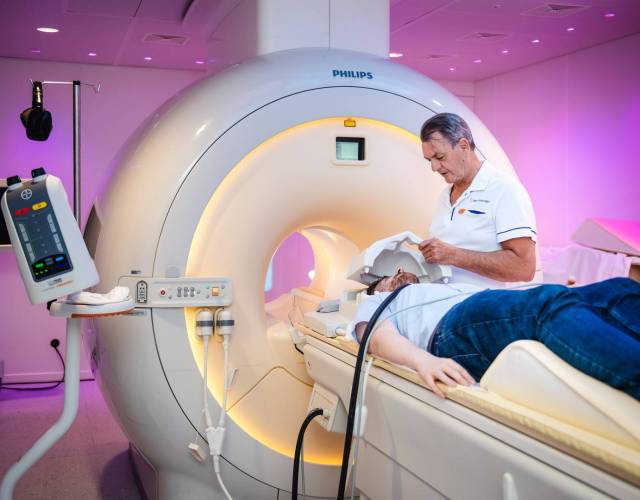Radiology represents a branch of medicine that deals with radiant energy in the diagnosis and treatment of diseases. This field can be divided into two broad areas – diagnostic radiology and interventional radiology. A physician who specializes in radiology is called radiologist.
The outcome of an imaging study does not rely merely on the indication or the quality of its technical execution. Diagnostic radiology specialist represents the last link in the diagnostic chain, as they search for relevant image information to evaluate and finally support a sound diagnosis.
Working in a darkened laboratory in Würzburg in Germany in 1895, Wilhelm Conrad Röntgen noticed that a screen painted with a fluorescent material in the same room, but a couple of feet away from a cathode ray tube he had energized and made lightproof, started to fluoresce.
Röntgen recognized that the screen was responding to the nearby production of unknown rays transmitted invisibly through the room which he called “X-rays”. Radiographic images began to be created, starting as a burst of ionizing radiation and causing a contrast image on a piece of film.
For his discovery, Röntgen was honored with the first Nobel Prize in Physics in 1901, and the public was fascinated with the ensuing developments and implications. Nevertheless, early radiologists were not concerned about the potential negative effects of X-rays, thus protective measures were not introduced until 1904 after the death of Clarence Dally (the long-time assistant of Thomas Edison in X-ray manufacture and testing.

Similar to the images produced in 1895, conventional radiographic images (usually shortened to X-rays) are produced by a combination of ionizing radiation (without added contrast materials such as barium or iodine) and light striking a photosensitive surface, which in turn produces a latent image that is subsequently processed.
The major advantages of conventional radiography are relative inexpensiveness of the images and the possibility to obtain them virtually anywhere by using mobile or portable machines (for example, mammography). Disadvantages are the limited range of densities it can demonstrate and the use of ionizing radiation.
Computed tomography (CT) currently represents the workhorse of radiology. Recent developments permit extremely fast volume scans that can generate two-dimensional slices in all possible orientations, as well as sophisticated three-dimensional reconstructions. Nevertheless, the radiation dose remains high, thus a very strict indication for every intended CT is needed.
Doctor Showing Patient X-Ray
Every sector within the health care field relies on radiology, including:
In many cases, early diagnosis can save lives, including those of patients diagnosed with cancer. Family doctors and emergency care physicians cannot effectively manage patients without diagnostic imaging, which is why they rely on radiology to find the right diagnosis and course of treatment.